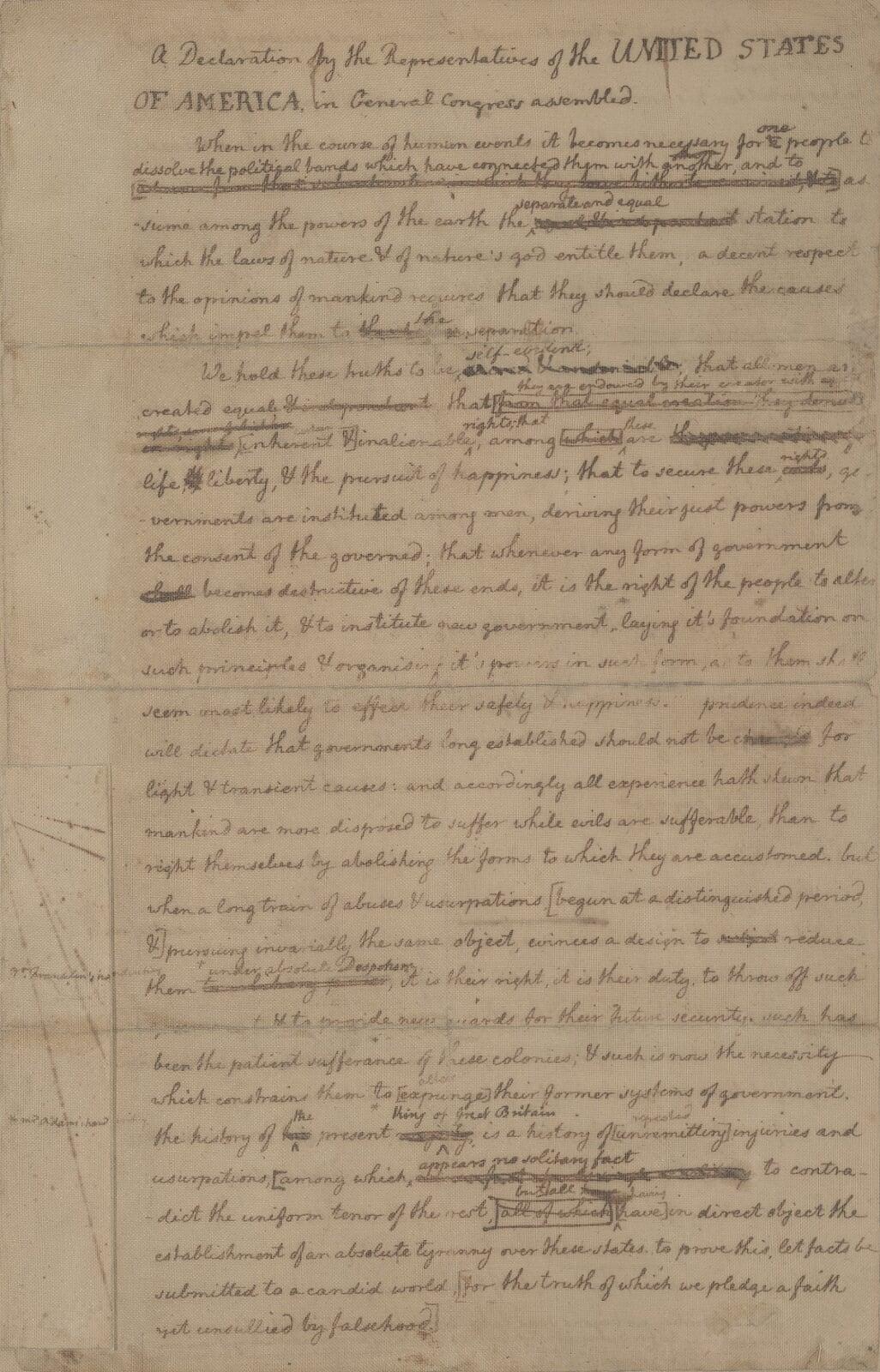Keys to Effective Editing
Managers in environmental science agencies wear lots of different hats, including the green visor of a copy editor. You spend much of your day reading, revising, and commenting upon long, technical documents written by your colleagues. Extensive changes are often necessary, but the process can be inefficient. Take your skills to the next level by learning how to copy edit efficiently and both when and how to delegate writing tasks to your colleagues.

(Image Declaration of Independence, draft by Thomas Jefferson with edits by Benjamin Franklin, 1776, US Library of Congress)
Environmental scientists who supervise others spend much of their day reading and reviewing long, technical documents written by subject matter experts. Nowhere is the temptation to micromanage quite so great as inside the confines of MSWord. And in few places must it be more strongly resisted.
When reviewing scientific, regulatory documents, you are performing two tasks:
a) aligning the document contents and logical organization with your agency’s needs and expectations, and
b) making extensive, detailed edits that are often time consuming and ineffective.
This course gives you the strategies to complete both tasks more efficiently.
Obviously, Keys to Effective Editing teaches the ins and outs of copy editing. The course offers detailed instruction on the characteristics of strong, clear paragraphs and sentences; how to spot problems; and how to fix them. You will gain the tools you need to edit in line with scientific and government standards, including style guides, guidance documents, and templates, as well as the guidance to use them wisely. Finally, you will get advanced guidance in grammar, mechanics, and MSWord so you can copy edit carefully and efficiently.
But perhaps more importantly, Keys to Effective Editing teaches course participants how to review a document quickly and diagnose its most significant shortcomings. Then, you can rapidly streamline and reorganize so the document communicates its purpose and contents clearly to its intended audience.
You will also learn when to do this work yourself and when to delegate it to the author. When you choose the latter, this course teaches you strategies so the feedback you give is structured, precise, and mindful of the colleagues you review. The greatest benefit of Keys to Effective Editing is that it teaches great editors how to improve the entire organization by also serving as thoughtful teachers.
Course Objectives
1. Distinguish among substantive editing, copy editing, and proofreading. Execute a substantive edit efficiently.
2. Consider the document's author, audience, purpose, and context when making editorial decisions.
3. Determine the types of guidance writers need and practice giving it to them using the PAR method.
4. Establish procedures for moving documents smoothly through the review process.
5. Employ a five-step method for assessing and improving paragraphs.
6. Manipulate subjects and verbs to create tight, readable sentences.
7. Use the relationships between the parts of speech and their functions in a sentence to punctuate documents correctly.
8. Access and efficiently use scientific and government reference works.
9. Master the finer points of plain language, the active vs. the passive voice, and pronoun usage.

